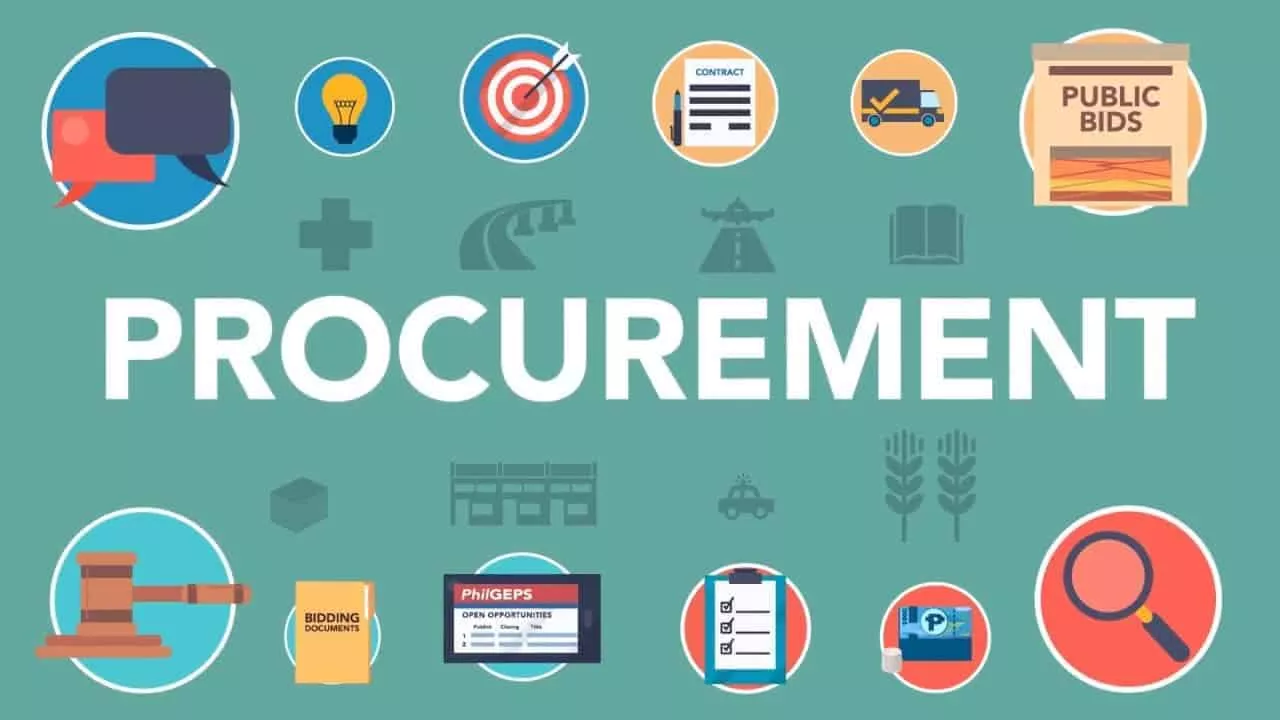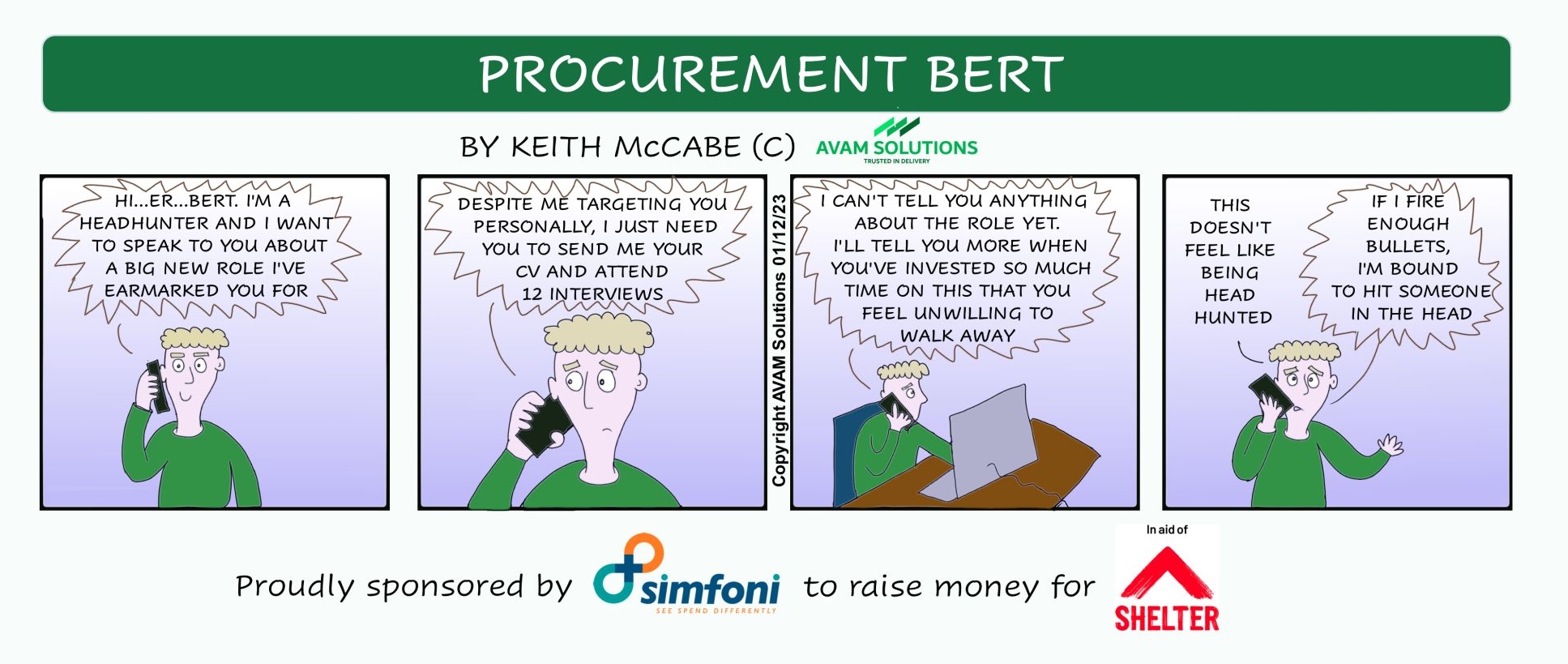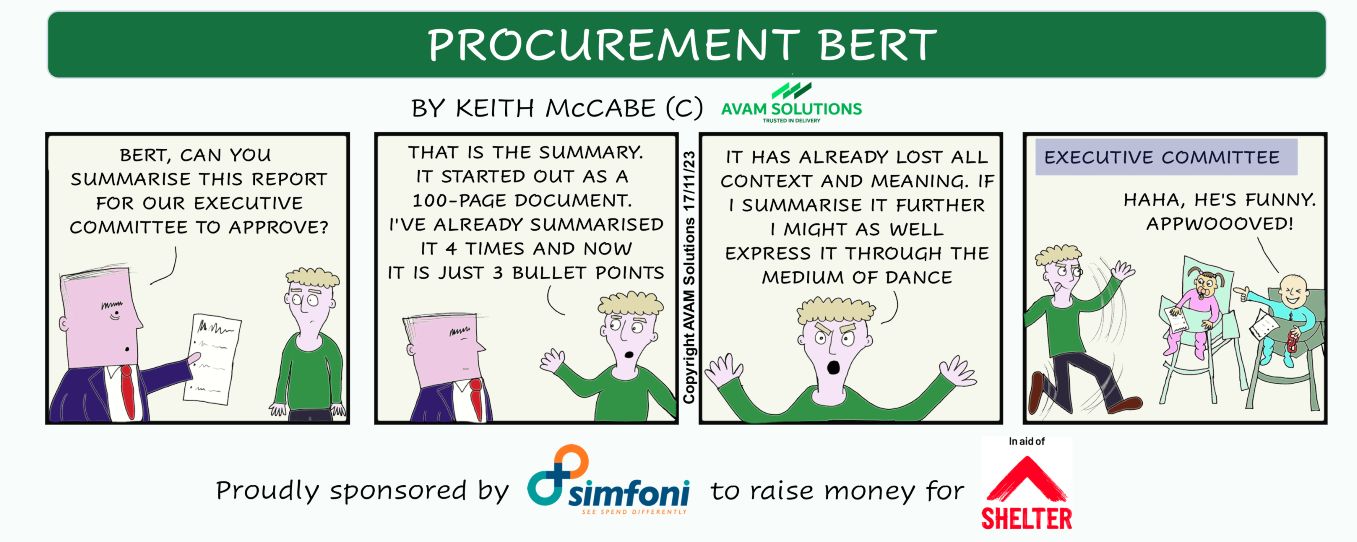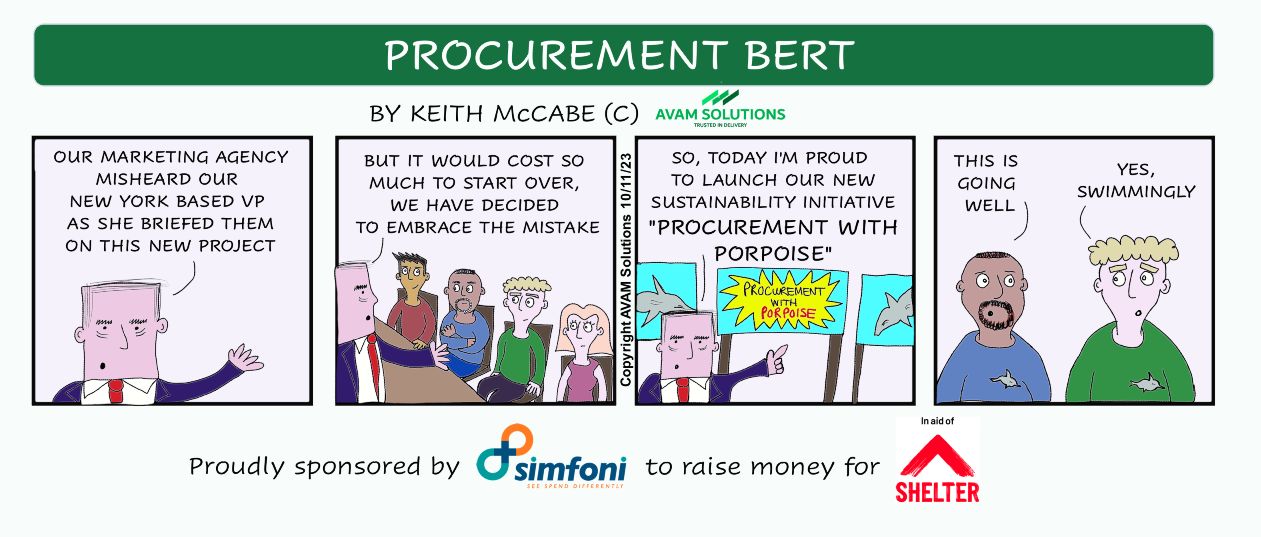Mid-market companies are at a significant disadvantage when compared to larger corporations — a key finding from Simfoni’s analysis of its customers’ procurement and savings delivery capabilities in mid-market companies.
It’s OK to obsess about top-line growth, but what lies beneath is a supply chain that eats into profit since it is not controlled and optimized. Mid-market companies are missing out on at least 5-10 percentage EBITDA points achieved through procurement effectiveness that their larger corporate peers routinely extract.
And how well a business manages and optimizes spend has a major bearing on working capital — the cash required to fund business operations. Hackett Group’s 2016 study of working capital concludes that every seven-day reduction in the cash conversion cycle adds up to 1% in sustainable EBITDA margin. For a company with an EBITDA margin of 5%, this is roughly equivalent to a 20% increase in profit.
So why the disadvantage?
Essentially the mid-market procurement challenge can be broken into three areas: resources, technology, leverage.
Let’s look at each.
Read More:- What is Procure to Pay – A Guide to Procure to Pay (P2P) Process
Resources:
Large organizations have large spend. They have the luxury of being able to hire top talent, with strong category or product expertise because they can amortize this investment across a wider spend scope. For example, most Fortune 500 manufacturing companies have an expenditure on packaging that runs into the hundreds of millions (if not billions), and a dedicated, elite team of packaging experts delving into low-cost country sourcing for plastic bags, challenging cardboard box specifications, and investigating returnable stillage options easily generates a 10-to-1 ROI if the spend in scope is, say, $300 million.
Medium-size companies still have the same product complexity. They still have to put their products in bags, which are then shipped in boxes, etc., but the spend in question might be only a tenth of that of the larger corporation, $30 million in this case. It is simply not practical for mid-market companies to indulge in hiring top procurement talent and buying special software; talent that is generally drawn to larger corporations where they command high salaries, have wider opportunities and a career path that is simply not replicable in smaller businesses.
Read More: – What is Source to Pay – A Guide to Source to Pay (S2P) Process
Since mid-market companies cannot deploy the level of talent and expertise, nor achieve the breadth of coverage that the large organizations manage, they can’t generate the same level of ROI.
The resource deployment requirement is the same, but the spend amortization is an order of magnitude less.
Technology:
Of course, we all know that a key role of technology is to streamline — even automate — manual tasks. So surely medium-size companies can be expected to have a higher degree of technology adoption to compensate for the resource challenge described above — essentially working smarter, not harder?
Well, it’s not that easy. Most technology costs do not align linearly with company size. Sure, the major players all have some version of a mid-market offering these days, but those solutions achieve a lower price point in part by stripping out certain functionality, which arguably weakens their value to the customer, but moreover, the price reduction is not matched to the reduction in the size of the customer. A $500 million revenue business will still pay about half, or at best a third of what a $5 billion customer might pay for the same technology — certainly not a tenth! So even in the technology arena the mid-market company is hamstrung compared to the large enterprise.
Furthermore, the adoption of technology pre-supposes that personnel are in place who know what technology to deploy and are adept at implementing it without external support. More often than not, this is not the case and the additional cost burden of hiring consultants to help with implementation and training further weakens the business case for such adoption.
And spare a thought for the private-equity owned mid-market company that has three years to show an improvement in EBIITDA — for them a long-term investment in technology is just a pipe dream.
Leverage:
The final nail in the coffin for mid-market procurement is the age-old argument about scale. Simply put, with a tenth of the spend, you have a tenth of the bargaining power with suppliers. And that means on a like-for-like risk basis that mid-market companies typically have to pay more for the same items.
The point about risk is an important one. Of course, mid-market companies are not scrutinized to the same level of ethical and social responsibility as the large corporates, and hence they can afford to take greater risk in sourcing their requirements from less established or less responsible vendors — and in fact many do this as a means of competitive survival. But it’s hardly an area of comfort, nor a sustainable solution to problems. Not least it’s a “tail wagging the dog” approach to survival, and as consumers ask more and more questions about corporate social responsibilities (CSR) — beyond the first tier of supply chain — the days are numbered for this approach.
Bringing it all together, it’s a pretty bleak picture for mid-market companies’ procurement — lack of resources, lack of technology support and lack of volume leverage. What solutions exist to tackle this conundrum?
Read More – 6 Ways to Support Supplier Diversity by Increasing Supplier Spend to Minority-owned, Diverse and Small Businesses.
Solutions relating to volume leverage have existed for some time. The GPO (group purchasing organization) model was originally borne out of the concept of smaller organizations grouping their spend to get better vendor pricing. But history has shown that this has worked out well for the GPO — which today enjoys a healthy margin for “not doing much” but not so well for their members, for whom the benefits have dwindled in comparison. It’s a world full of smoke and mirrors, lacking transparency or even basic price benchmarking. And of course the GPO model does nothing to address the efficiency of procurement with users still mostly having to visit stores to avail their discounts at the checkout.
In more recent times, the e-marketplace has arisen to offer improved transparency while still aiming to create volume (and hence price) leverage. Most famously Amazon Business. But in fact if you look a little closer, industry specific verticals such as Purchasing Platform (real-estate property management), offer not only better pricing but more specific products tailored to the needs of the sector, such as landscaping equipment and pool maintenance supplies in this case. These marketplaces go further than simply generating price discounts on aggregate volume. With online delivery also included for free, the savings from staff taking time to drive down to stores are often greater.
But even marketplaces have their limitations. By definition, products in a marketplace need to be standard, commonly purchased items, such as paint, office equipment, signage, pumps etc. Such purchases typically represent around 80% of an organization’s transactions, so streamlining the procurement process, getting greater spend visibility and lower prices is a really good step forward. But all these purchases only amount to around 20% of the spend by value. The other 80% is represented by more one-off and strategic requirements that are unique to the customer situation.
This includes items such as machined components, with specific drawings, or fuel with specific drop-off locations and service level agreements tailored to the organization’s operating patterns. Also vehicles, packaging, insurances, uniforms, capex requirements, fit-outs … all of which incur some level of organizational specificity and can’t be procured from a GPO or marketplace situation.
Another option is to look at outsourcing procurement entirely. The main procurement outsourcing players such as Accenture, IBM and GEP are really only interested in deals with billions of dollars of spend. And in many instances the business case is predicated on labor arbitrage (i.e., lots of cheap labor that can do the same job at a lower cost.) That’s hardly a long-term sustainable solution or even relevant for medium-size organizations with limited labor-force requirements.
To date most mid-size organizations have relied on hiring consultants or contractors to tackle strategic spends from time to time. The ROI makes sense when doing the sourcing for the first time, but it is not commercially viable to retain such experts on a long-term basis, and the deals put in place then tend to decay either due to lack of compliance or become outdated with changing business and market conditions over time.
In summary, mid-market companies struggle to break the status quo and are stuck with sub optimal procurement deals and inefficient manual processes, even though they can perhaps sense the opportunity to reduce spend.
So, what to do?
Simfoni identified this problem some time ago from our experience of working with both mid-size companies and larger corporates.
At Simfoni our approach is to offer an On-Demand Procurement model that combines three key features all in a single solution: Technology, Content, Shared Service Resources.
The first part of our deployment is a market-leading analytics platform. We start every customer engagement with an analysis of spend. Aside from identifying savings opportunities arising from leverage, consolidation, optimization, etc., we use the analysis to configure our technology platform to the customer requirement. We benchmark current prices against our own market information, any frequently purchased items that we don’t support are added to our catalogs, and data about preferred vendors is used to populate digital category cards in our platform. This is a very detailed exercise but it allows us to design a procurement platform that is specific to the individual organization requirement. Only after this is complete is the solution ready to roll out to the users.
At the heart of our solution is a marketplace. Covering over 250,000 SKU’s the marketplace offers leveraged pricing on the most commonly purchased, standard items such as office equipment, IT Hardware, PPE, cleaning materials, marketing consumables, etc. Around 80% of a mid-market company’s requirements can be sourced directly through here.
Sitting “on top” of the marketplace is our Buying Desk. Put simply, if you can’t find something in the marketplace, the user is automatically directed to a requisitioning tool where requests can be submitted to a team of buyers. The smart thing about this is the company is only paying for this resource when it is being used. There are no staff sitting around on hand waiting to process orders — it’s an On-Demand model — which makes it very cost effective. At our end, we organize our buyers according to category, which also makes them experts in their field, so depending on value and complexity of the product, the appropriate skill level is deployed to ensure that goods or services are sourced in the most cost-effective way. We have literally had a customer order a fleet of buses through our Buying Desk!
The Buying Desk itself uses an automated sourcing platform that uses machine learning to automatically convert the requisition into an RFP. Issuing the RFP is itself child’s play since we have already stored the preferred vendors into the system using the analytics while the system also selects a shortlist of alternative vendors to drive competition.
Running alongside this technology/content/resource model is a team of category managers, each of whom is a subject matter expert in their chosen field. We overcome the resource efficiency challenge by deploying say, a fuel specialist, across multiple clients with fuel requirements, rather than trying to spread one person thinly across many categories in the same client.
In this way, a mid-market organization suddenly has access to over 30 procurement experts but only pays a standard fee based on the amount of spend that is put through the system. Since we own our own technology platform, we don’t have to charge heavy licence fees, setup fees, implementation fees upfront and can amortize the costs over the duration of a client engagement and ensure fees are payable in line with savings realization to avoid any benefits lag.
Conclusion:
Unlike sales and marketing efforts, procurement is entirely within your span of control and with the right analysis the benefits are quite predictable. On-Demand procurement provided by Simfoni has zero upfront capital investment and generates immediate net savings realization; two benefits that mid-market companies can surely appreciate to finally get behind procurement as a source of sustainable shareholder value creation.
Contact us today to know more about how Simfoni’s technology and processes can help your organization achieve world-class Spend Analysis, Supplier Management, Impact Assessment, Savings Tracking & Tail Spend Management Solutions











